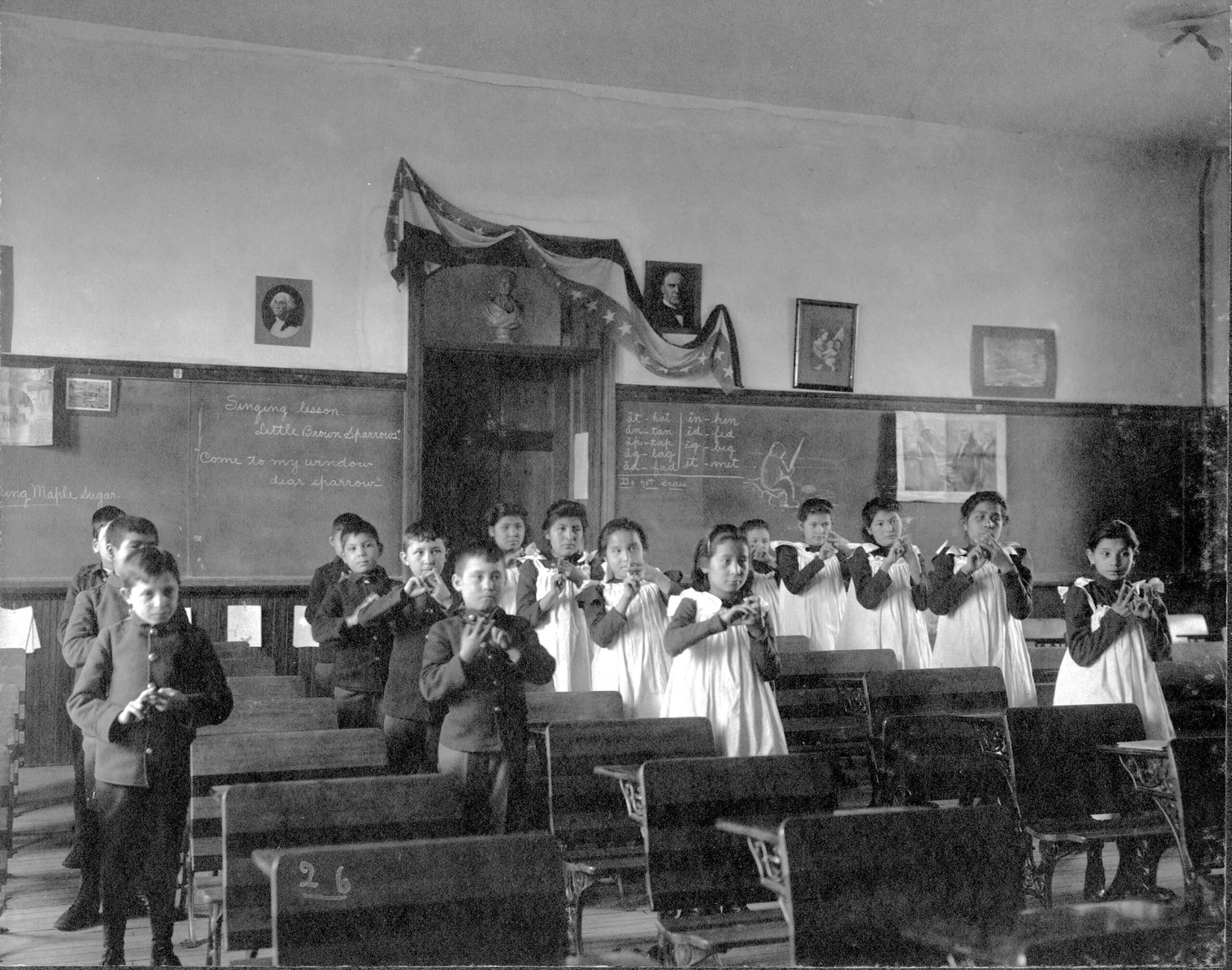
About Indian Boarding Schools
A Forgotten History
Lieutenant Colonel Richard Henry Pratt founded Carlisle Indian Industrial School, the first Indian boarding school, in 1879 with the support of the United States government. Families were promised that students would learn English at the school, supposedly to protect against misrepresented treaties in the future.
Instead, children were subjected to manual labor and harsh punishment for speaking their languages or displaying cultural practices. “Kill the Indian, save the man” – a maxim coined by Pratt – became the motto of the school and many more like it. These government- and church-operated schools sought the full assimilation of Native American children through the total elimination of Indigenous culture.
When parents refused to send their children to boarding schools, government officials ensured compliance through coercion and force. Families were kept apart for months or even years at a time, making true reunification almost impossible in many cases.
A Far-Reaching Cultural Genocide
Awareness of the dark legacy of Indian boarding schools remains limited in the U.S., despite their enduring impact on Native American communities. Despite this, their aftermath is felt profoundly throughout tribal communities today.
During the 19th and 20th centuries, there were more than 400 government-funded, often church-run Indian boarding schools across 37 states
Children as young as four attended these schools, frequently after forcible removal from their homes
By 1926, more than 80 percent of school-age Native children were enrolled in boarding schools
1 in 4 Native children was living apart from their families by the 1960s
A probe conducted by the U.S. Department of the Interior has identified approximately 50 burial sites at Indian boarding schools and at least 500 deaths among Native children attending them
Twenty-five Oneida Indian Nation Members attended the Carlisle Indian Industrial School between 1882 and 1918. An additional 94 Nation Members attended the Thomas Indian School between 1856 and 1957.
More than 180 children who attended the Carlisle school are buried in the Carlisle Indian Cemetery.
A Legacy of Loss
The harm inflicted by Indian boarding schools did not disappear with their closure – nor did it end with the children who attended. Victims’ unrecognized and unresolved trauma passes from generation to generation to this day.
The lasting outcomes of the violence and cultural genocide of Indian boarding schools include:
Loss of family ties
Struggles with parenting and family life
Lost language and culture
Lateral violence
Substance abuse
High rates of imprisonment
Mental and physical illness
Physical and sexual abuse
Food insecurity and poor nutrition
Limited access to education
High suicide rates
Poverty
Racism
While boarding schools dwindled in number, the forcible removal of Native children from their families and communities continued at alarming rates. In the 1950s, for example, the Bureau of Indian Affairs (BIA) created the Indian Adoption Project. Like boarding schools, these programs and policies were designed to force assimilation and eradicate Native cultures and family systems.



